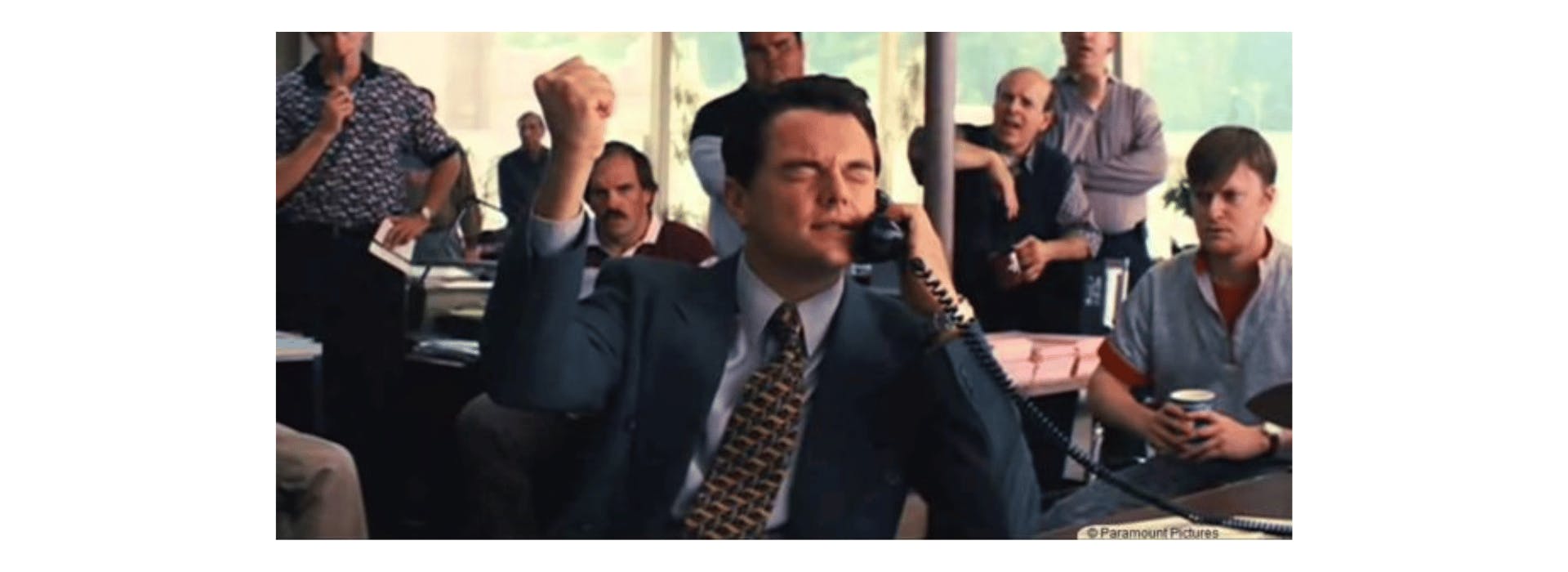 Go back to list of posts
Go back to list of postsThe Psychology of Selling: Techniques That Close Deals
January 1, 1970
Selling depends on human behavior. People buy based on emotion, trust, risk avoidance, and clear value. When you understand why buyers act, you use stronger selling techniques. You guide conversations with purpose. You address doubts. You move the buyer toward a clear decision. Strong sales closing techniques help you do this with structure and discipline. Many teams train with simple tools such as a Cold Email Template to support early outreach before a live call.
This guide explains how to close a sale with practical steps rooted in psychology. You get simple actions that improve your results. Each tool helps you move a buyer from interest to action without pressure or confusion.
Why Psychology Shapes Selling Success
Sales happens in the mind before money moves. Buyers respond to certain triggers. These triggers reduce resistance. They support trust. They make complex choices easier.
Three ideas shape most selling techniques:
- People seek clarity.
- People avoid loss.
- People follow confidence.
When you build your approach around these ideas, you influence decisions in a clean and respectful way. You guide a buyer toward a choice they already want to make. Strong company culture examples show that teams who follow consistent communication habits close deals faster.

How to Close a Sale With Clear Intent
Clarity wins deals. Buyers hesitate when they feel uncertain. They delay when the offer feels vague or risky. Your job is simple. Remove doubt. Give structure. Present facts, examples, and outcomes.
Strong communication aligns with the buyer’s view of success. You speak about results. You speak about use. You speak about what life looks like after the purchase.
Build Trust First
Trust decides outcomes in sales. Without trust, no technique works. With trust, even a long process moves forward with ease. A strong first step is to present your contact details in a clean format. A digital business card supports this. We recommend KADO when buyers want a professional tool that updates easily.
Practical steps:
• Tell the buyer what the product does
• Show proof with data
• Share quick case stories with exact results
• Answer questions with clear facts
• Use a steady tone and strong eye contact
• Offer details about price, process, and timeline early in the talk
Buyers move forward when they feel safe. Trust lowers risk in their mind.

Use Questions That Reveal Real Needs
Questions control the conversation. Good questions guide the buyer to speak honestly about goals, problems, and obstacles. This gives you the information needed to position the right solution.
Examples of useful question types:
• What outcome do you want by the end of this quarter
• Where do you lose the most time
• Which step slows your workflow
• Who will use this solution daily
• What worries you before making a purchase
Each question gives insight. Each insight shapes your next step. Buyers feel understood when you focus on their world. This builds control and direction. These moments often reveal areas where clients seek innovation examples that show progress and efficiency.
Present Solutions With Simple Logic
Buyers commit when solutions match personal goals. Avoid vague statements. Use short sentences that explain value. Focus on outcomes.
Example structure:
Problem: You lose time in manual steps.
Consequence: Your team moves slower.
Solution: Our product removes manual steps.
Result: Your team saves hours each week.
This format is direct. No confusion. No extra words. Buyers follow the flow with ease. This supports action. Many buyers frame these outcomes within larger digital transformation plans.
Sales Closing Techniques That Rely on Psychology
Closing techniques work when the buyer understands the value. You guide them toward the finish line with structure, not pressure.
Below are proven sales closing techniques rooted in psychology.
The Summary Close
This technique works well in long sales cycles. You recap key points, outcomes, and benefits. The goal is to show alignment.
Example approach:
• You want faster execution
• You want lower risk
• You want clear support
• Our offer delivers these three outcomes
This gives the buyer a full picture. The mind prefers complete information. A summary triggers clarity.
The Contrast Close
People judge value by comparison. When you present two clear options, buyers choose faster.
Example:
Option A: Keep your current system with slow response times and higher manual work.
Option B: Move to our solution with lower workload and faster results.
The contrast highlights value. You do not push. You simply show the difference. These moments often shape strong corporate branding choices as the buyer evaluates identity and trust.
The Trial Close
A trial close tests readiness. You check where the buyer stands without pressure.
Examples:
• How does this solution fit your goals
• How do you feel about the price
• Which features matter most for your team
Their answers show if they are ready to commit. If they show hesitation, you address the concern before moving ahead.
How to Close a Deal With Strong Buyer Alignment
Closing a deal requires alignment. You link the product to the buyer’s goals. You speak about outcomes that matter to them. You show why action today brings more value than delay.
Address Objections With Structure
Objections happen in every sale. You reduce friction by addressing each one with logic, proof, and short explanations.
Steps:
- Listen without interruption
- Repeat the concern to show understanding
- Provide data or examples
- Confirm satisfaction
- Move forward
Example:
Buyer: I worry about adoption.
Response: Teams with similar profiles reached full adoption in two weeks with our support plan. Here is the data. Does this address your concern
Clear steps reduce stress. Buyers respect direct answers.
Use Social Proof
People follow results from others. Social proof reduces fear.
Use items such as:
• Case studies with numbers
• Testimonials with names
• Success metrics from similar industries
• Before and after data
This supports trust and lowers hesitation.
Reduce Perceived Risk
People avoid loss. If a buyer fears loss, they stall. Reduce risk with strong support.
Examples:
• Transparent pricing
• Clear onboarding steps
• Easy cancellation terms
• Simple documentation
• Dedicated support
When risk feels low, action feels safe.
Emotional Triggers That Influence Action
Emotion drives decisions. Logic supports the final choice. A strong seller works with both.
Key emotional triggers:
Urgency Rooted in Real Value
Urgency works when tied to a real reason, not pressure.
Examples:
• Price moves up next quarter
• Inventory drops fast
• Production slots fill early
• Implementation starts on fixed dates
This gives structure for action. Buyers value timing when stakes feel real.
Confidence From the Seller
Your tone influences decisions. Buyers follow strong guidance. When you speak with clarity, you reduce their doubt.
Use straight statements:
You get full support
Your team saves time
Your process improves from day one
Confidence moves deals forward.
Clarity About Next Steps
Buyers act when they see the path ahead. Provide steps in simple language.
Example:
Step 1: Sign order
Step 2: Onboarding meeting
Step 3: Setup
Step 4: Go live within one week
The brain prefers clear steps. This reduces friction.
Practical Steps for Everyday Sales Calls
Below are daily habits that improve selling techniques in any industry.
Prepare Before Each Call
Know your buyer. Read their industry. Check their goals. Build a short outline before the conversation.
Include:
• Key questions
• Possible objections
• Data points
• Case stories
Preparation raises confidence for both sides.
Keep Language Simple
Simple language prevents confusion. Buyers understand value faster. Short sentences create clarity and flow. Avoid jargon. Use direct words.
Track Buyer Signals
Pay attention to tone changes, long pauses, direct questions, or enthusiasm. These signals tell you where the buyer stands. Adjust your next steps based on their signals.
Focus on Outcomes
People buy outcomes. Not features. Not specs. Show the result. Show how life improves after the purchase.

Final Thoughts
Strong selling depends on psychology, structure, and discipline. You use sales closing techniques rooted in clear human behavior. You guide buyers with trust, logic, data, and simple actions. When you master how to close a deal with direct language and strong alignment, your results improve across every conversation.
Frequently Asked Questions
How to close a sale?
You close a sale by asking strong questions, presenting clear value, addressing concerns fast, and guiding the buyer toward the next step with confidence.
How long does a short sale take to close?
A short sale often takes one to three months. Timelines vary based on lender approval, document accuracy, and buyer readiness.
What are the best closing techniques in sales?
The best techniques focus on clarity and alignment. Use the summary close, the reason close, and the trial close to confirm readiness and move the deal forward.



